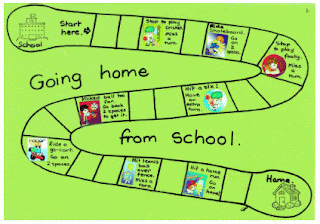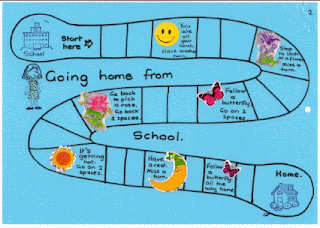One problem I notice that keeps cropping up with the Grade 1 children is the difficulty with words me/my, be/by etc.
Here is a strategy I use to help them differentiate between these 2 vowel sounds:
When you say a long 'e' sound, as in 'me', your mouth is wide and smiley, a bit like a letter 'e':
When when you say a long 'y' sound, as in 'my', your mouth hangs down, like a letter 'y':
I draw a diagram like those above, then write a list of words, with an exaggerated wide letter 'e' or extra long letter 'y'. e.g.
me my
be by
we why
she shy
We then practise reading the words with exaggerated mouth actions, and I encourage the children to use the exaggerated actions when they read those words, or similar words (he, cry, fly, etc.).
After a while, the children will no longer need to actually make the exaggerated mouth action as they read (though they may need reminders at times).
If you like, you can download the pictures above and print them for use with your child or students.





